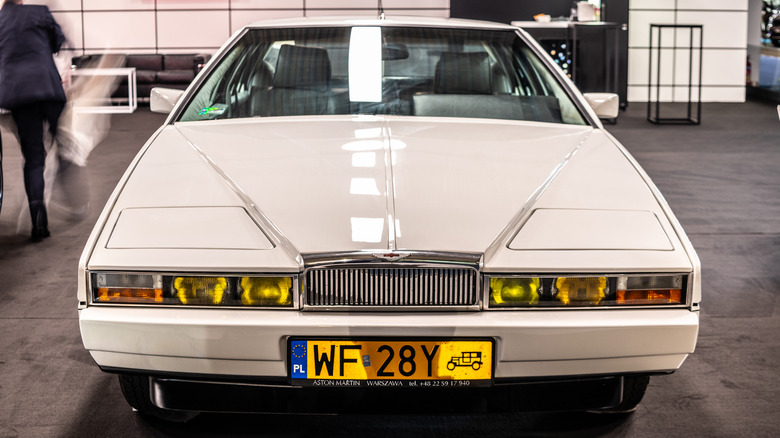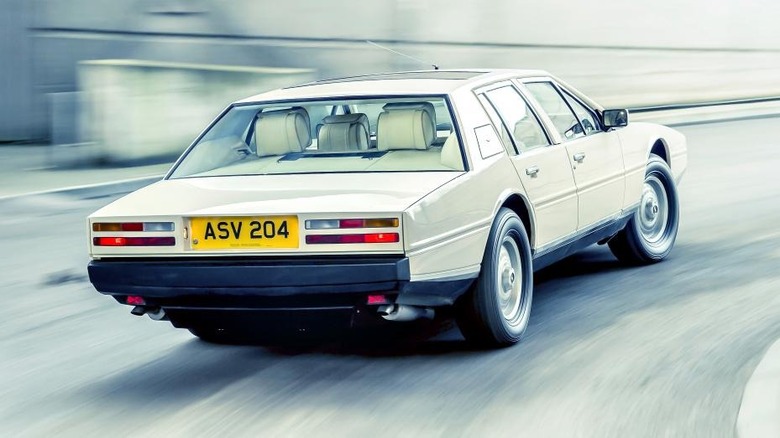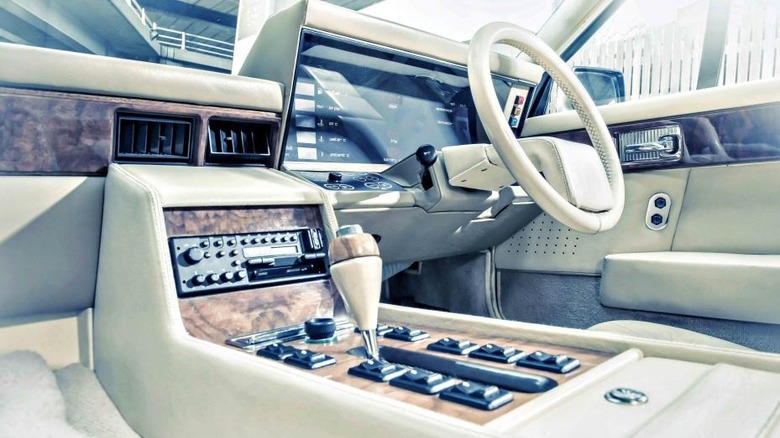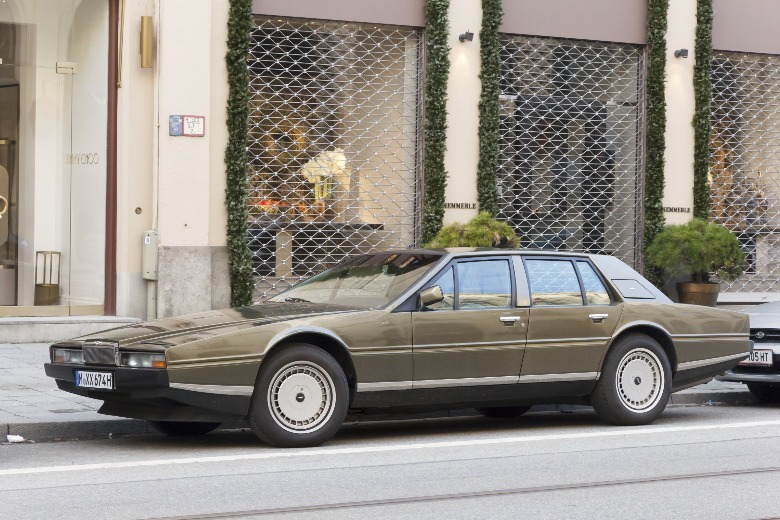The 5 Greatest Features Of The Original Aston Martin Lagonda
The Aston Martin Lagonda marquee goes back to 1961 with the Lagonda Rapide, a four-door, grand-touring, sport-luxury sedan that wouldn't look amiss in a classic "James Bond" flick. The Lagonda nameplate also brings to mind the ultra-limited-edition Lagonda Taraf for the Middle Eastern market. But for Aston fanatics and car enthusiasts in general, the Aston Martin Lagonda manufactured from 1976 to 1990 remains the most iconic to wear the Lagonda nameplate, despite the car's inherent faults.
We called the wedge-shaped Lagonda the most expensive failure of the Aston Martin brand. The Series 1 Lagonda came about when Aston exchanged hands from Company Developments to Peter Sprague and Alan Curtis in 1975. The automaker only sold seven units of the first-gen Lagonda before the new owners asked William Towns to give the car a styling makeover. The Lagonda is notorious for its hi-tech yet unreliable electronics, but it still has five great features that would make us look beyond its demerits.
Sleek wedge styling
The Aston Martin Lagonda's crisp lines, arching windshield, and wedge-shaped profile are one for the books. The late '70s to 1980s gave birth to numerous poster cars wearing similar, striking silhouettes. Vehicles like the Lotus Esprit, Maserati Boomerang, Lancia Stratos, and Lamborghini Countach come to mind, and the Lagonda blends nicely with the crowd.
The sharp lines of the aluminum body panels are all hand-made and hand-filed to perfection. The aluminum skin has a layer of linen between the steel underneath, and the entire body is hand-rubbed with 23 coats of lacquer (per Car and Driver). The factory offered 12 paint colors, but Aston Martin could paint the Lagonda in any color the customer wanted. Did we forget to mention the Series 2 Lagonda came with pop-up headlights? The redesigned fourth-gen Lagonda made do without the cool pop-up headlights and came with three headlight clusters on each side.
Burly V8 engine
Under the Lagonda's massive hood is a 5.3-liter V8 gas engine with 280 horsepower and 360 lb-ft of torque. The Series 1 Lagonda came with a five-speed manual or an automatic transmission. The Series 2, Series 3, and Series 4 Lagondas all have a Chrysler TorqueFlite three-speed automatic gearbox. Moreover, the Series 2 Lagonda's V8 mill has four Weber two-barrel carburetors, but the succeeding generations have modern fuel injection.
Hi-tech (for the time) interior
The Aston Martin Lagonda Series 2 debuted with a ridiculously hi-tech interior. It came with vintage cathode ray screens instead of conventional analog instruments. The cabin is brimming with fancy buttons that other production cars from the same era could only dream about. The microprocessor-based instrumentation and controls were genuinely out of this world, but Aston Martin almost went bust developing the Lagonda's modern cabin. Moreover, the fiddly electronics were notorious for unreliability despite looking like the most fantastic things you'll find in a 1970s Aston Martin.
Handcrafted luxury
The Aston Martin Lagonda's interior and dashboard features were something to write home about. The credit goes to its handcrafted cabin with genuine leather and wood panels. According to Car and Driver, the Lagonda's headliner features finely woven gray wool that looks good enough to wear to a fancy soiree.
Exclusivity
We can babble all day about the Lagonda's pesky electronics and quirky visage. However, we haven't forgotten that the Series 2 debuted with a £20,000 base price, or about $200,000, in 1976. With that price, it's no wonder Aston Martin sold very few Lagondas. Aston only sold seven units of the Series 1 Lagonda, and fewer than 492 Series 2 Lagondas made it to owner garages (per The Drive). Between 635 to 646 Lagondas left the factory from 1976 to 1990. If you find one in mint condition, buy it on the spot, but prepare to pay $80,000 to upwards of $130,000 (per Classic Trader) as values are rising steadily for its exclusivity.



